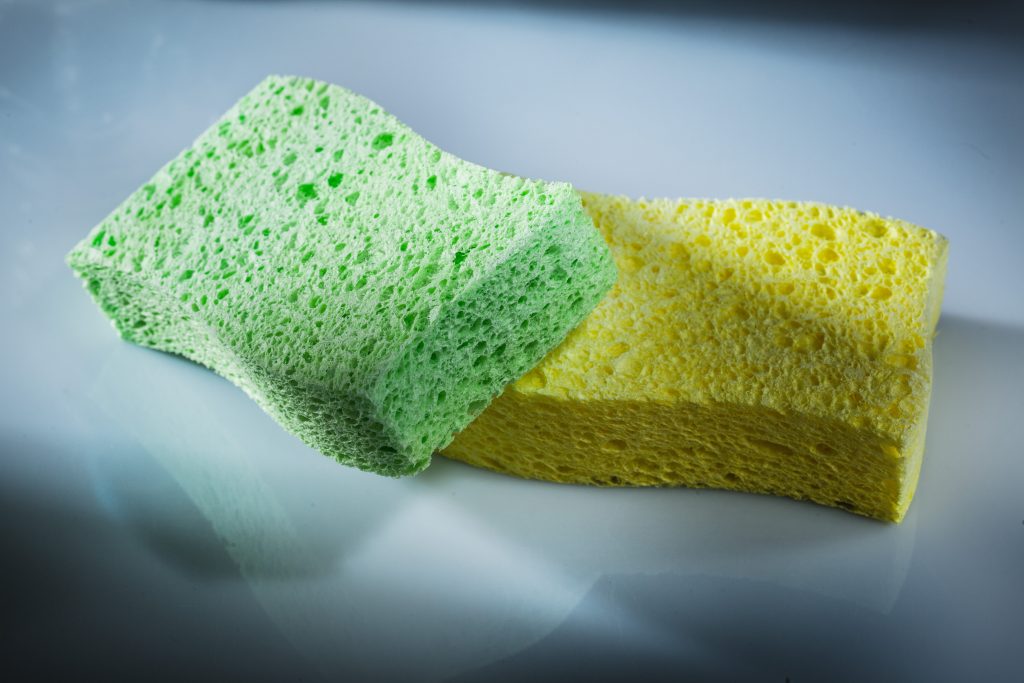
We live in a world teeming with invisible microbes, and many of them congregate on the surfaces we touch most frequently. While our immune systems handle most encounters just fine, some everyday objects are surprisingly potent reservoirs of bacteria, viruses, and fungi. Ever wonder what truly harbors the most grime? We’ve looked at common culprits and ranked some of the nastiest things you likely interact with daily, reminding us just how prevalent everyday germs are. Prepare to maybe wash your hands after reading this.
1. The Kitchen Sponge/Dish Rag
Topping almost every list, the kitchen sponge is consistently found to be the dirtiest item in the average home. Its porous, damp environment is the perfect breeding ground for bacteria, including E. coli and Salmonella, picked up from food particles and countertops. Constantly moist and rarely properly sanitized, it spreads everyday germs efficiently. Microwaving it damp or soaking it in bleach solution helps, but frequent replacement is key.
2. Your Smartphone
As established in another discussion, your phone goes everywhere and touches everything, rarely getting cleaned. It picks up germs from hands, surfaces (like bathroom counters), and face oils, creating a mobile petri dish. Studies regularly find phones harbor more bacteria than toilet seats. The constant touching and proximity to your face make it a prime vehicle for transferring everyday germs. Regular cleaning is essential.
3. Money (Cash and Coins)
Physical currency changes hands constantly, passing through countless environments and picking up everything along the way. Bills and coins can harbor thousands of types of bacteria, viruses, and even trace amounts of drugs. While less commonly used now, handling cash remains a significant way everyday germs spread. Washing hands after handling money is always a good practice.
4. Keyboard and Mouse
Whether at home or in the office, your computer keyboard and mouse are touched for hours daily, often after eating or touching your face. Crumbs, skin cells, and oils accumulate between keys, feeding bacteria. Shared keyboards are particularly notorious hotspots for everyday germs. Regular wipe-downs with disinfectant are recommended, especially for shared equipment.
5. Door Handles and Knobs
Think about how many different hands touch public door handles every single day – entrances, restrooms, offices. These high-traffic surfaces are constantly being inoculated with new microbes. While materials like brass and copper can have antimicrobial properties, most handles are efficient transmitters of everyday germs. Using a paper towel or your sleeve can help in public spaces.
6. Gas Pump Handles
Gas pump handles are touched by hundreds, if not thousands, of different people daily and are almost never cleaned. They accumulate grime, fuel residue, and a wide array array of bacteria and viruses from everyone who has refueled before you. Using gloves or hand sanitizer immediately after pumping gas is a wise move to avoid these concentrated everyday germs.
7. ATM Buttons
Like gas pumps, ATM keypads and screens are high-touch public surfaces used by many people and rarely sanitized. Users transfer microbes from their hands onto the buttons, creating a repository of everyday germs. Considering people often handle cash immediately before or after using an ATM, the potential for germ transfer is high. Sanitize hands after use.
8. Restaurant Menus
Laminated menus in restaurants get passed from table to table, handled by numerous customers and staff throughout the day, but are often only superficially wiped down, if at all. Studies have found menus can host high levels of bacteria, potentially transferring everyday germs right before you eat. Washing hands after ordering and before eating is advisable.
9. Shopping Cart Handles
Thousands of shoppers push the same carts every week, touching the handles after handling groceries, their children, or potentially being ill. These handles become collection points for a diverse range of bacteria and viruses. Many stores now offer disinfectant wipes near cart corrals for this reason; using them is a good idea to minimize contact with everyday germs.
10. Light Switches
Especially in public restrooms or shared spaces, light switches are frequently touched by unwashed hands. People often flip the switch immediately upon entering a restroom before washing, and again after washing, potentially re-contaminating hands. These small, often overlooked surfaces can be surprisingly grimy hubs for everyday germs.
Living in a Germy World Takeaway
It’s impossible and unnecessary to live in a sterile bubble, but being aware of germ hotspots can encourage better hygiene practices. Objects like kitchen sponges, phones, keyboards, and various public surfaces harbor a significant load of microbes. Simple acts like regular handwashing, using hand sanitizer, and routinely cleaning high-touch items can significantly reduce your exposure to potentially harmful everyday germs. A little awareness goes a long way.
What everyday object do you suspect is the germiest? Did any items on this list surprise you? Share your thoughts below!
Read More:
Why Your Grief Doesn’t Match Theirs—And Why That’s Perfectly Normal
7 Self-Love Struggles You Don’t Realize You Have (And How to Fix Them)

Latrice is a dedicated professional with a rich background in social work, complemented by an Associate Degree in the field. Her journey has been uniquely shaped by the rewarding experience of being a stay-at-home mom to her two children, aged 13 and 5. This role has not only been a testament to her commitment to family but has also provided her with invaluable life lessons and insights.
As a mother, Latrice has embraced the opportunity to educate her children on essential life skills, with a special focus on financial literacy, the nuances of life, and the importance of inner peace.
